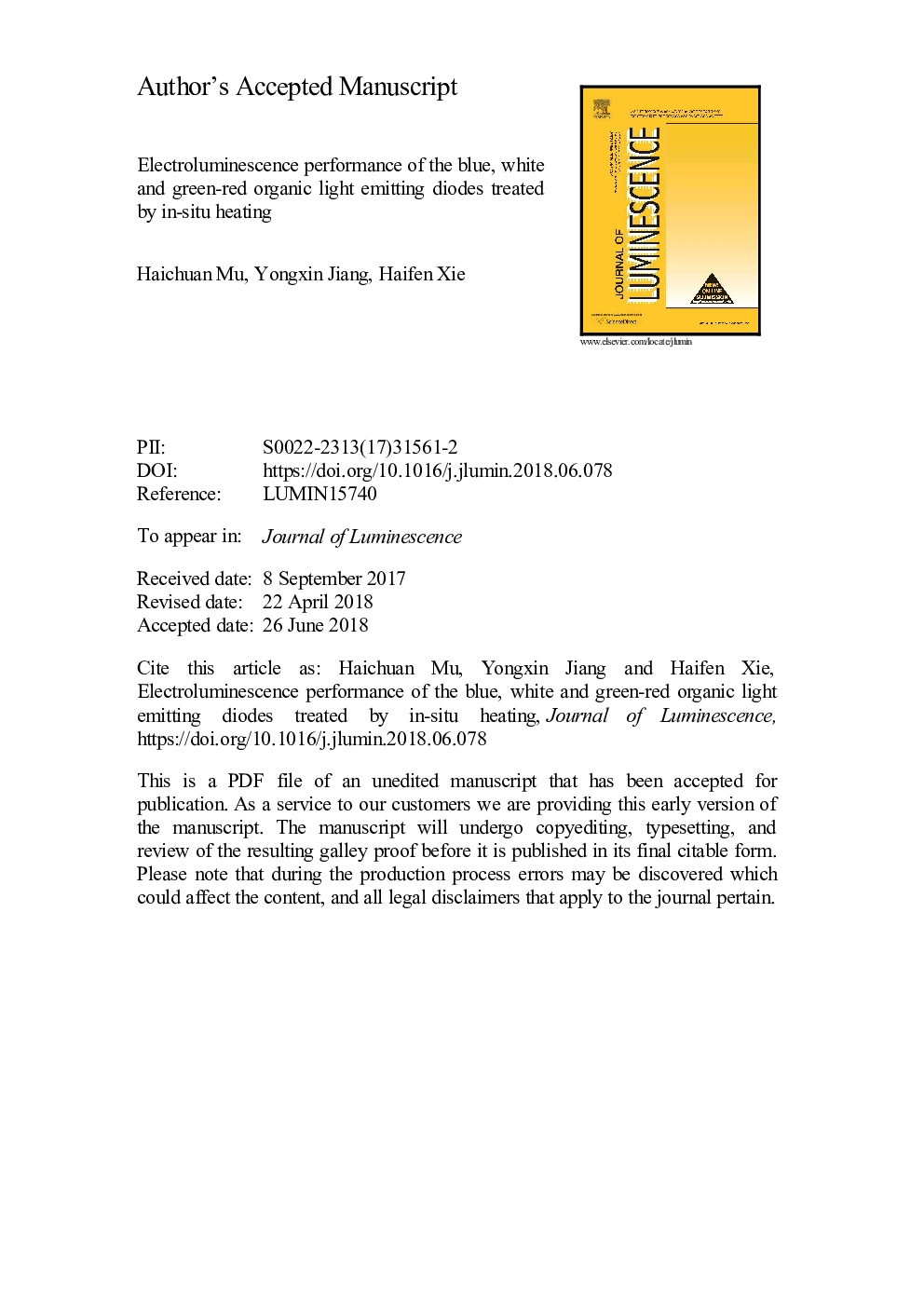| Article ID | Journal | Published Year | Pages | File Type |
|---|---|---|---|---|
| 7839784 | Journal of Luminescence | 2018 | 76 Pages |
Abstract
White light phosphorescent organic light emitting diodes (W-PHOLED) together with the blue light (B-PHOLED) and green-red light phosphorescent OLED (GR-PHOLED) equipped with the same blue and green-red emission layer were fabricated, and remarkable in-situ heating effects on their electroluminescence (EL) performance were observed. For the B-PHOLED, the in-situ heating increased the peak power efficiency (PE) by more than 30% with the increasing heating temperature from the room temperature to 100â¯Â°C accompanying with negligible effects on the blue light color stability. However, the optimal in-situ heating temperature of 100â¯Â°C for B-PHOLED was not beneficial to the PE of the W-PHOLED, but greatly facilitated the white light color stability. Such opposite impact on the W-PHOLEDs PE and color stability might be ascribed to the effects of the in-situ heating on the organic materials inter-diffusion and excitons decaying dynamic. The GR-PHOLED revealed the similar PE dependence on the in-situ heating as those of the W-PHOLED as well as the deteriorated color stability upon in-situ heating. The mechanism responsible for those characteristic temperature dependence of the EL performance was investigated focusing on the surface morphology related carrier transportation and carriers mobility related excitons decaying.
Keywords
Related Topics
Physical Sciences and Engineering
Chemistry
Physical and Theoretical Chemistry
Authors
Haichuan Mu, Yongxin Jiang, Haifen Xie,
